How Digital Transformations Succeed
This piece provides a starting point for understanding digital transformation and creating an effective strategy, with case studies, research, and a six-part framework for success.
New technologies shift consumer expectations, challenge norms, and put pressure on organizations to respond. The pace can be bewildering. For organizations—from grocery chains to advertising agencies—hoping to remain viable, the litmus test is adaptivity, agility, and innovation. It’s not about bracing for a tidal wave, it’s learning how to surf.
This piece provides a starting point for understanding the digital transformation journey better and creating an effective digital transformation strategy. We’ll cover the following:
- What digital transformation is (and what it isn’t)
- Why talent is the core factor for digital transformation objectives
- How one company’s digital transformation initiative resulted in a stock rise of 35%
- Major trends driving digital transformation disruption in 2020 (and beyond)
- A cautionary tale, why some digital transformations fail (and a case study)
- The six attributes of a successful digital transformation framework, with case studies
What Is Digital Transformation?
The computerization and digitization of processes is nothing new, but digital transformation is more critical now than ever. Businesses have to embrace digital methodologies to remain relevant; two-thirds of CEOs globally will pivot their strategies toward digital transformations by the end of 2019.
Definitions vary, but for the purpose of this article, we’ll define digital transformation as follows:
Digital transformation is the holistic process by which an organization redefines and betters itself using the digital technologies which metamorphosize business and society at large.
Digital transformation is a continuous evolution. Too commonly, organizations see digital transformation goals as an end point. They decide to “do” digital transformation. “Digital is not just a thing that you can buy and plug into the organization,” warns the Harvard Business Review. The digital transformation journey encompasses much more than simply rolling out apps or redesigning a website. It’s about fundamentally redefining an organization’s business operations and customer experience through digital technologies and creating a company that’s actually stronger and more agile than it previously was.
Organizations can lay the groundwork for a successful digital transformation by first solidifying commitment from the organization’s C-suite and senior leaders, recommends a Forrester report. Without decision-makers at the top to greenlight critical moves—like bringing in a new hire or team to modernize an outdated CMS, for example—progress will stagnate. With executive support, the organization can kick off a digital pilot project, like converting a single, minor business function to digital. Once confidence around a successful digital initiative is established, the organization can move forward with more experimental and bold projects.
For companies that can leverage the correct strategies, the benefits of digital transformation can be both reinforcing and lucrative (as in the case studies referenced below). Digital transformation’s primary advantage is to keep the organization relevant, adaptable, and competitive amidst a shifting landscape. Transformative efforts can redefine a business’s approach to customer strategy, consolidate operations, improve agility and streamline the enterprise’s products and services.
Digital Transformation Starts with the Right Talent
The digital transformation process isn’t plug-and-play. It has everything to do with who manages and executes the change program; an organization-wide program must also have the right talent across the organization. It turns out that’s more difficult than ever in today’s job market. A 2018 Gartner skills survey revealed that 70% of talent do not have the digital skills they need for their jobs today; 64% of managers don’t think their employees can keep up with skill trends.
Joint research from Deloitte and MIT Sloan Management Review say talent-related roadblocks are the number one operational and cultural digital transformation challenge. Business leaders investing in digital transformation objectives want talent with a blend of business skills and highly technical acumen, but it’s a difficult middle ground to locate. This leads organizations to a “build or buy” dilemma—whether to go outside the organization or develop from within. Experts suggest doing both. Gartner’s research points to connected learning, as opposed to continuous learning, which it says can increase skill shift preparedness by as much as 39%. This mode of learning anticipates skills which will be critical to a given market and provides resources to employees for learning them. Healthcare software company Cerner is taking this approach head-on, for example, reskilling 10,000+ employees, including software programmers who aren’t fluent in modern programming languages.
Adaptivity is critical to transformational efforts; creating an adaptive organization starts with talent that can quickly reskill or upskill, shifting focus as the needs of the organization dictate.
Digital Transformation Meets Fast Casual: Chipotle’s Story
Brian Niccol took up the mantle as CEO of Chipotle in 2018 and inherited a struggling company. The struggle was mainly due to reported incidents of E. Coli and norovirus outbreaks, which resulted in losses in store sales as great as 20%. Then Niccols stepped in, spearheading an aggressive change program which owes much of its success to digital.
Niccol shifted Chipotle away from a defensive crouch, emphasizing quality ingredients and subtly introducing a concept of “fast casual.” Niccol also immediately relocated Chipotle’s HQ from Denver to Newport Beach, CA to better attract top-notch talent. His opening moves were essentially a corporate reset.
The biggest shift was to embrace digital completely and redefine the customer experience as a whole. Niccol pivoted digital focus from the back end—improving behind-the-counter operations—to customer-facing friction points. Chipotle branches started incorporating pickup shelves for digital orders that allowed those customers to skip the line (to be rolled out to all Chipotles by mid-2019). Niccol also oversaw a partnership with delivery service DoorDash, increasing its access to new customers dramatically. Drive-through services were added to some locations (“chipotlanes”) and combined with a digital app to provide a highly-customized experience that’s also expedient.

The results? Chipotle’s stock rose 152% in 17 months (as of July, 2019); its digital sales alone boomed by 66% during the last three months of 2018. In Q1 of 2019, Chipotle doubled its digital sales—a 100.7% year-over-year increase. Digital sales made up 15.7% of Q1 2019 sales, representing $205 million. “The digital access, removing friction [. . .] is a big unlock for the Chipotle business,” said Niccol.
Niccol pulled Chipotle out of a disconcerting slump. In doing so, he created a case study for digital transformation growth as an ongoing change program aimed at the entirety of a business. But the success of a digital transformation roadmap relies on much more than integrations and apps. The organization must be primed for agility and responsiveness (more on that below). There’s nothing easy about this. In fact, most digital transformations fail completely
Digital Transformation Trends: AI, XaaS, and RPA
Digital transformation processes are driven by newly-emerging technologies, and experts predict that 2020 will see some of the most exciting, disruptive, and innovative possibilities yet.
Chief among these possibilities, according to Forbes’ Top 10, is AI and machine-learning. Big data market revenues are projected to increase from $42 billion (2018) to $103 billion by 2027 according to Wikibon; some predictions even suggest a more aggressive trajectory. Organizations need to leverage powerful insights from this data. Automating data analysis, for example, combined with the scale of datasets stored in the cloud, can yield crucial insights.
IDC predicted that, in 2019, 40% of digital transformation initiatives would be supported by AI. It only follows that the need for capable talent to spearhead these initiatives will become even more paramount in 2020 and beyond. The potential of these initiatives cannot be overstated—in some case studies, they’ve saved major companies $330 million in revenue and improved sales forecast accuracy by 15%.
XaaS (everything as a service) is an operating model that delivers IT services via the internet to enterprises. In a Deloitte survey, 71% of IT professionals from major US companies said that XaaS makes up over half of their enterprise IT. XaaS is slated to become a major boon to agility in 2020 and beyond, establishing itself as the new IT operating model. It’s a one-two punch that allows CIOs to upgrade legacy systems to be more efficient, secure, and reliable while simultaneously offering IT services beyond organizational borders, creating a new revenue stream.
One example is Amazon, which extended its own eCommerce solutions to customers. Another classic example is Salesforce, which offered its proprietary sales software as a service in 1999 via web browser.
RPA—robotic process automation—is the fastest growing market in enterprise, according to Gartner. The technology is aimed at automating digital processes that would otherwise be manual. RPA applications can be programmed to capture data, complete transactions, generate an automatic response, deploy bots, and integrate with other digital systems, for example. The result is a substantial decrease in manual task input from employees and reduced operation costs. RPA has seen major success across industries like insurance and healthcare.
By considering trends and aligning accordingly, companies can ensure viability and take advantage of the massive opportunity these digital pivots offer. But adaptive readiness is more than adopting new trends: It begins with organizational mindset.
A Cautionary Tale: Why Many Digital Transformations Fail (The BBC’s Story)
As many as 84% of digital transformations fail, according to Forbes, representing billions in failed efforts. Lots of major brands have come up short in their efforts, resulting in defunding, job loss, and CEO exits. According to a 2017 Harvey Nash/KPMG survey, a mere 18% of organizations self-rated their digital technology practices as “very effective.” Common digital transformation challenges include:
- Talent shortages
- Lack of prioritization
- Operating models that are difficult to adapt to digital
- Attempting a “one and done” transformation rather than an iterative process
- Lack of focused leadership attention
- Insufficient funding
- Lack of clear accountability and ownership for initiatives
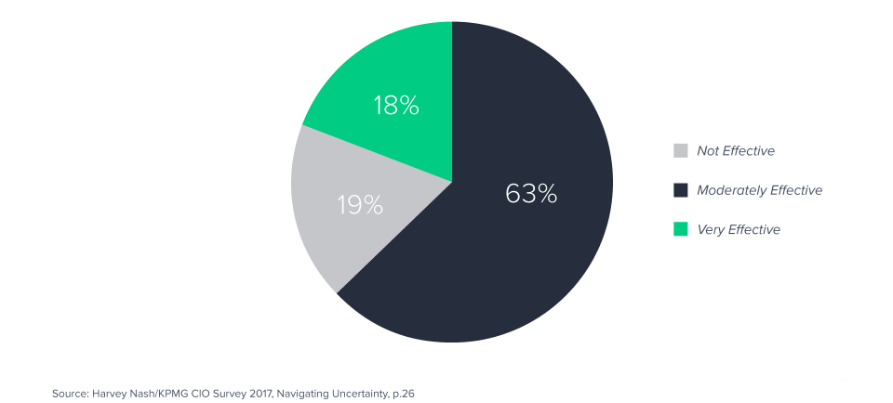
A fundamental issue across these roadblocks is lack of digital mindset. Harvard Business Review agrees, citing several mindset-related blunders that are ultimately the responsibility of senior leaders. Many C-suite executives see digital transformation initiatives as an all-in-one solution, something that can be simply slotted into an organization. In the early 2010s, the BBC learned this the hard way.
The BBC’s Digital Media Initiative (DMI) kicked off in 2008 with the intention of fundamentally altering its in-house data management practices and the way it delivered content to audiences. It was the cornerstone of the BBC’s digital transformation model. After a struggling partnership with Siemens, the BBC moved DMI in-house, but came up short because of technical capabilities. It was canceled in 2013: the end result was a loss of over £125.9 million (appeoximately $152 million USD).
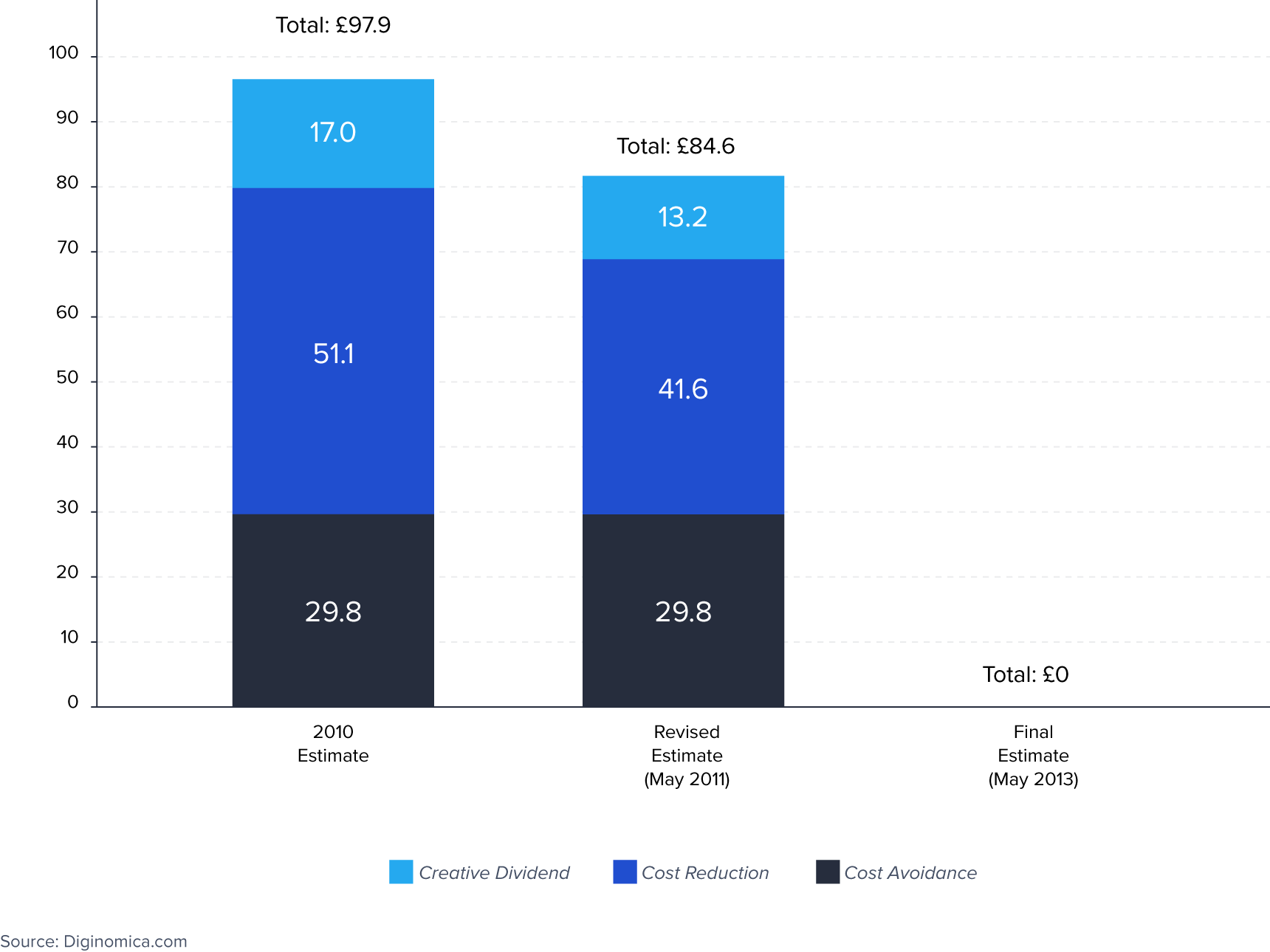
Where did the BBC go wrong? First, governance: PwC (PricewaterhouseCoopers) investigated the project and found that it suffered from a lack of executive monitoring and transparent reporting. Second, siloing: The transformational effort did not extend to business operations. The transformation was not overarching, isolated to the program itself rather than a change program which would apply across the organization.
As IT pundit Tony Collins puts it: “[. . .] the BBC’s failed £125.9m Digital Media Initiative is a reminder—as in most failed big IT-enabled projects—that the causes have nothing to do with software and everything to do with management and people.”
6 Keys to a Successful Digital Transformation Strategy
Pivoting to a digital mindset requires a number of shifts and the development of certain underlying traits to be effective. We’ve identified six core elements, which build on one another to create a digital mindset and digital transformation framework. Underpinning this structure is the first key: Leadership.
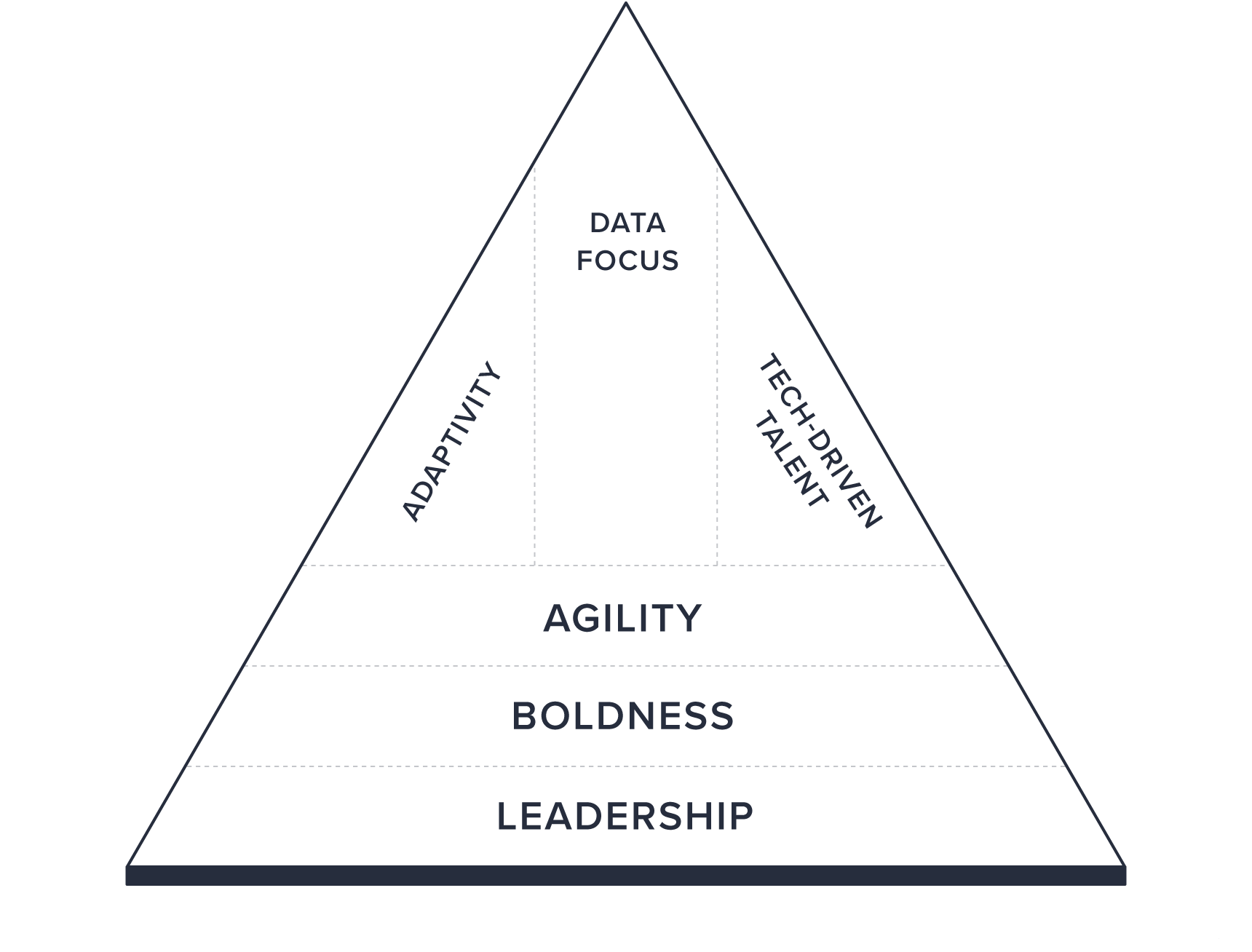
1. Leadership
Leadership is most critical in times of change and demonstrating the right mindset starts at the top. In one study, organizations with senior leaders familiar with digital technology were found to be 2.3x more successful with transformations. The same increased rate of success was also found in organizations with a dedicated chief digital officer. Digital maturity parallels strong leadership, which sets the tone for the top-down effort that digital transformation requires.
For example, Forbes identifies five qualities of digitally mature leaders:
- Clear purpose in adding technologies to the enterprise
- Forward thinking to locate opportunities
- Perceptivity in optimizing systems which don’t function to their best potential (instead of just fixing what’s already broken)
- Encouragement of innovation and experimentation; praising failure as a learning opportunity
- Embracing partnership opportunities that serve the business’s end goals
Without the support of CEOs, CIOs, and other leadership roles, transformational efforts stand on weak footing. In the BBC case study cited above, failed reporting structures and governance fall on the shoulders of then-technology chief John Linwood, who was eventually fired. “The BBC Executive did not have sufficient grip on its digital media initiative programme,” said the head of the National Audit Office. In this case, the failure of leadership cost the BBC a fortune (not to mention public embarrassment).
2. Boldness
Research suggests the following when it comes to transformational efforts: Be bold. Unless an organization receives a top-down overhaul, it won’t be able to implement a digital transformation framework broadly. Of course, some ramp up is still necessary; in fact, many digital transformations fail because of too much, too soon. Beginning transformational efforts with behind-the-scenes operations, for example, rather than client-facing operations, is a wise approach. Still, the end goal is transformational capability across the organization.
One study found that efforts were twice as broad in organizations with the highest digital maturity. It is not enough for an organization to silo digital transformation objectives to a single function, unit, or even a few units. Data from McKinsey (below) reveals that a transformation effort is not likelier to succeed until the breadth of the undertaking surpasses “multiple business units” and is classified as “enterprise-wide.” Only then does its rate of success become 1.5x as likely.
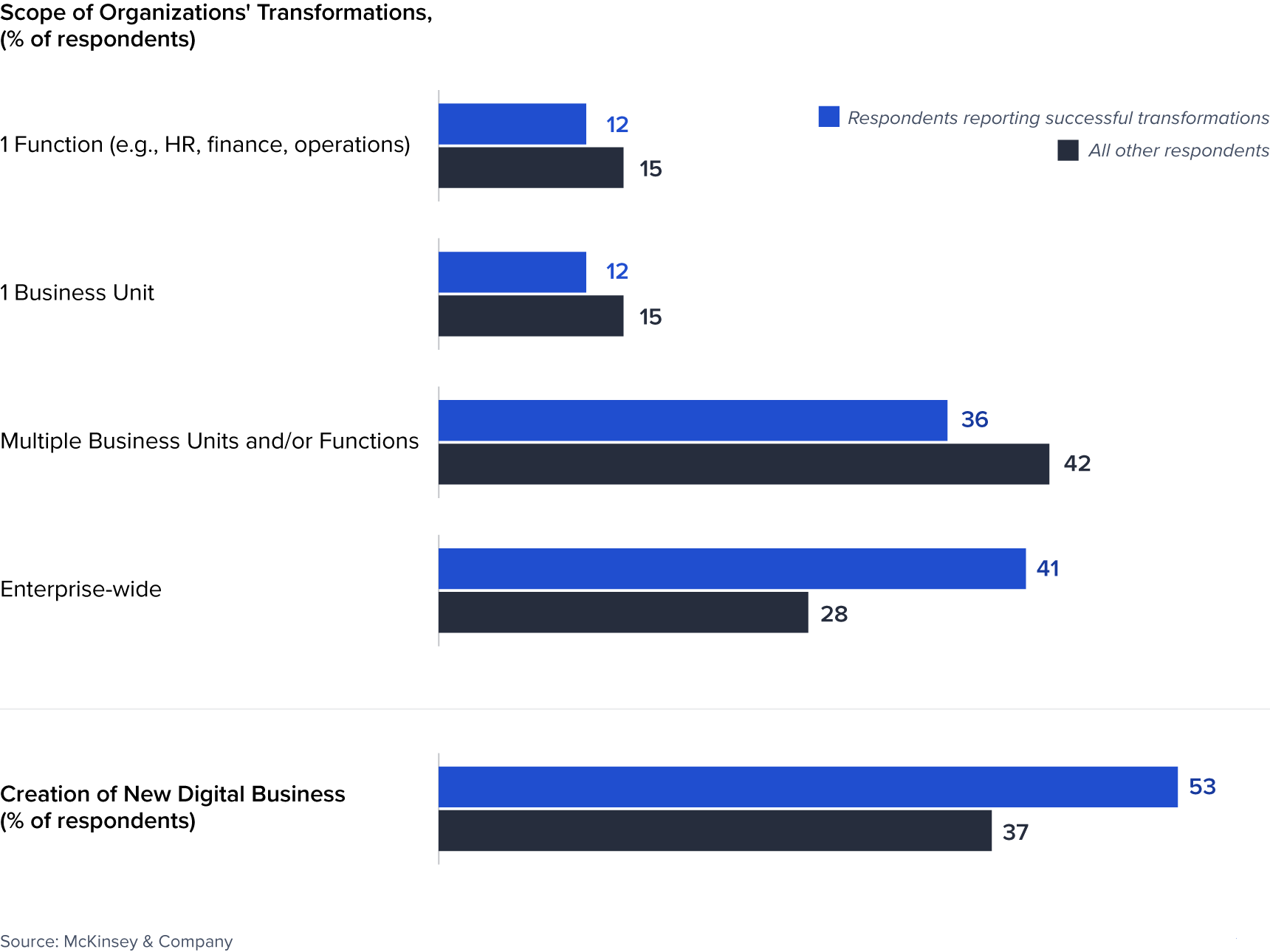
Nissan CIO Tony Thomas sets a strong example of boldness in action. After his move from GE, Thomas transitioned the entire enterprise (about 240,000 employees) to digital working systems like Microsoft 365, enabled mobile access to corporate applications, and staffed 500 software engineers in a digital hub in India to work on applications like big data analytics and AI applications. Nissan aims to create autonomous vehicles, and Thomas’ bold example across the organization is setting the stage to realize that future.
3. Agility
Digitally mature companies see their organizations as empowered, poised to convert disruptions into advantages. This is agility in action.
Optimizing cross-collaboration between functions is a hallmark of an agile organization. When Armstrong World Industries CIO Dawn Kirchner-King joined the company in 2015, she found the organization was waterlogged by suboptimal digital practices. By embracing agile project management methodologies, she brought a sense of urgency to the company, upgrading and updating CRM systems, travel management systems, and creating a new website. She then reallocated the savings to critical projects like cybersecurity and pivoted the IT team to focus on analytics related to the manufacturing process. Through Kirchner-King’s transformational efforts, the company optimized to shift attention and resources quickly.
Embracing a certain dynamism as pertains to talent allocation and team formation is a necessary element as well. Shifting roles to respond to needs quickly, reorganizing teams for improved efficiency—agile methodologies should be incorporated from a team-structure perspective as well. Rather than viewing talent as a person who fulfills a role, savvy organizations view talent as building blocks that can be rearranged around projects and the shifting needs of the company.
A related tool which organizations increasingly rely on is contingent on on-demand talent. Because the needs of businesses fluctuate so often, assembling teams who can bond quickly around shifting sands is a priority. Because initiatives are increasingly enacted on an experimental or temporary basis, access to contingent staff who can fill in the gaps and increase momentum is a powerful aid to agility and speed.
4. Adaptivity
While the first three keys are vertical, the elements which define transformation in practice are horizontal: No single element outweighs its siblings.
Adaptivity refers to an organization’s capacity to restructure while still remaining secure (and cybersecure). Adaptivity is about incorporating new systems with speed while also staying alert to newer, potentially more effective systems.
Kroger—a grocery company with 136 years of history—is taking digital adaptivity very seriously and reaping the rewards as a result. CEO Rodney McMullen pushed for a digital initiative in 2014; since then, Kroger has grown from no digital sales to $1.5 billion in digital sales in 2018, which he says is trending toward $9 billion annually. With online ordering and pickup, plus a partnership with Instacart, Kroger claims that everyone will be able to shop with them, either offline or online. Kroger also has a 5% stake in a UK online grocer Ocado to build 24 robotically-powered fulfillment centers. McMullen also cites alliances with Home Chef, Walgreens, and Microsoft—partnerships are key in his vision.
Kroger is effectively redefining itself as an omnichannel retailer, infusing its operations with digital and completely adapting to the shifts in the marketplace. Although it sits third in that marketplace (under Amazon and Walmart), there’s enough evidence to suggest these powerful digital initiatives may allow it to close the gap.
5. Data Focus
Data is critical in any digital transformation playbook because it fuels the game-changing insights that AI and machine learning offer. Without that fuel, efforts to utilize these incumbent technologies fall flat. Combined with expert predictions about the role of big data in 2020 and beyond, data is slated to only become more essential. Nuanced data and metrics provide insights which form a solid basis for organizational decision-making: 88 percent of companies with high digital maturity report a positive impact via data use.
Sprint is one major organization leveraging data-driven insights as part of its main strategy. In response to pressure from competitors, CIO Scott Rice is spearheading a campaign that utilizes an open-source software called Elastic Stack to evaluate over 50TB of data. This identifies any potential recurring glitches in customer cycles, which helps Sprint realize why customers aren’t completing a transaction. Rice says that previously, his teams were siloed, meaning the data couldn’t be evaluated as a whole. Going one step further, Sprint is utilizing a “data lake” that helps it make better recommendations to customers. In response, Sprint’s stock has spiked considerably in the second half of 2019.
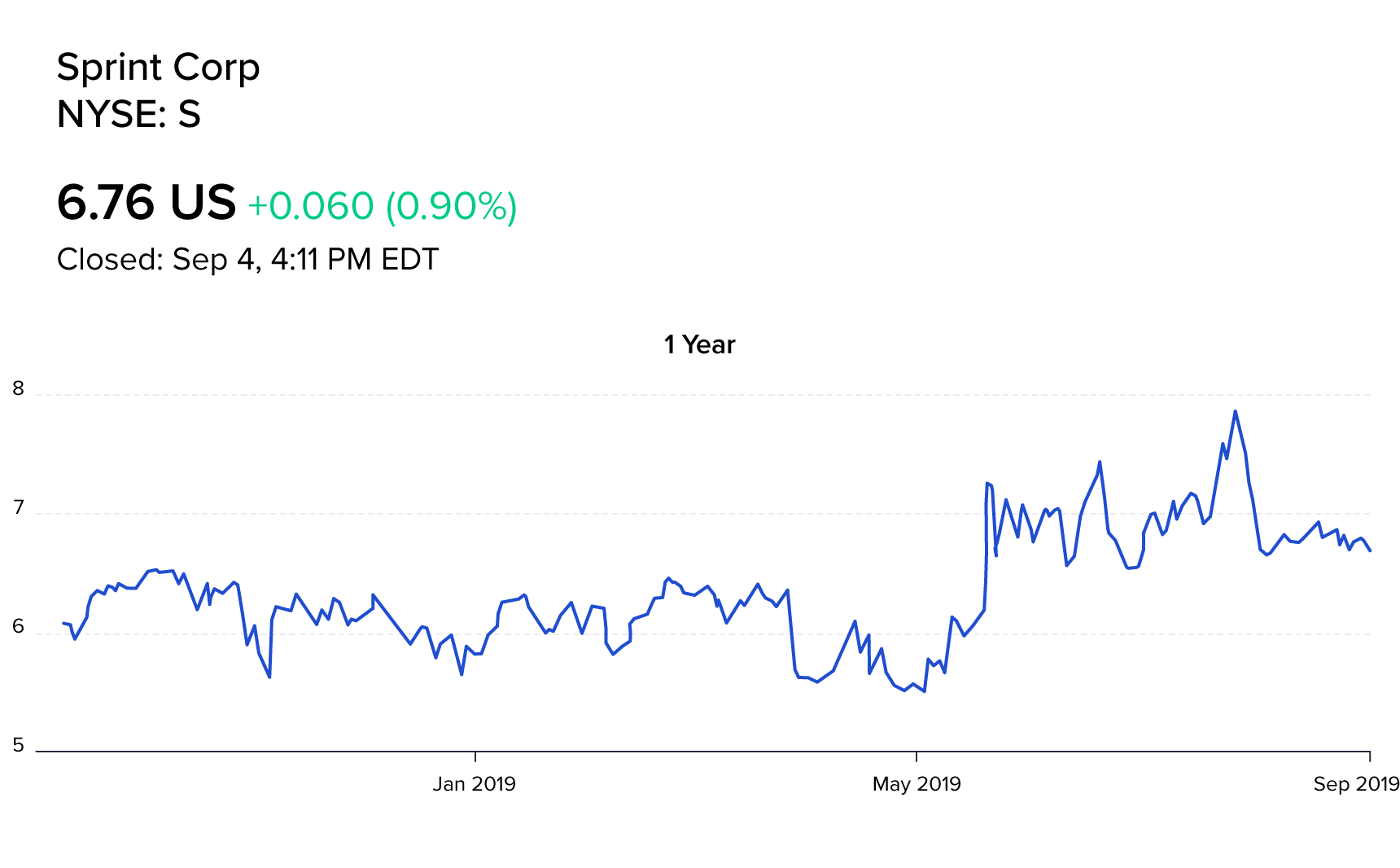
6. Tech-driven Talent
For successful incorporation, an organization’s talent must be primed for digital change; for many organizations, this is a roadblock.
As referenced above, companies commonly invest in training or retraining programs to bring stakeholders up to speed. The goal for organizations is to craft a company culture—whether through talent acquisition or educational opportunities for existing staff—which mirrors those found in companies that have been digital from Day 1.
When Subway launched its digital transformation initiative, it hired over 150 new employees to fill its digital talent gap. Talent was critical to its digitally-driven initiatives—remote ordering capability via Facebook Messenger, for example, which contributed to a 100% year-over-year growth from mobile ordering. The company also recently rolled out digital menu boards, electronic kiosks, and a separate pickup area for mobile orders. Facing forward, the franchise is evaluating how trending technologies like augmented reality could fit into its system. None of this would be possible without the boost in digital talent the company committed to early on.
With this critical sixth component in place, a business can effectively rewire their organizational mindset to be digitally mature, but more critically, digitally prepared. An organization which uses these structural components as a foundation is predisposed to dynamic response to digital fluctuations.
Digital Transformation: A Gold Rush
The digital transformation landscape might be compared to the 1800s California Gold Rush. The risks are there, but the potential is massive and best practices are being defined in-flight. Companies who want to utilize these transformations to their advantage start with the right talent, define a digital mindset, and create action plans with flexibility in mind. Continuous reevaluation becomes standard.
The very nature of a “healthy organization” is being reexamined. For companies that can adapt the radical mindset-shift that digital transformation demands, the future is full of exciting potential, despite its evolving nature.









Add comment